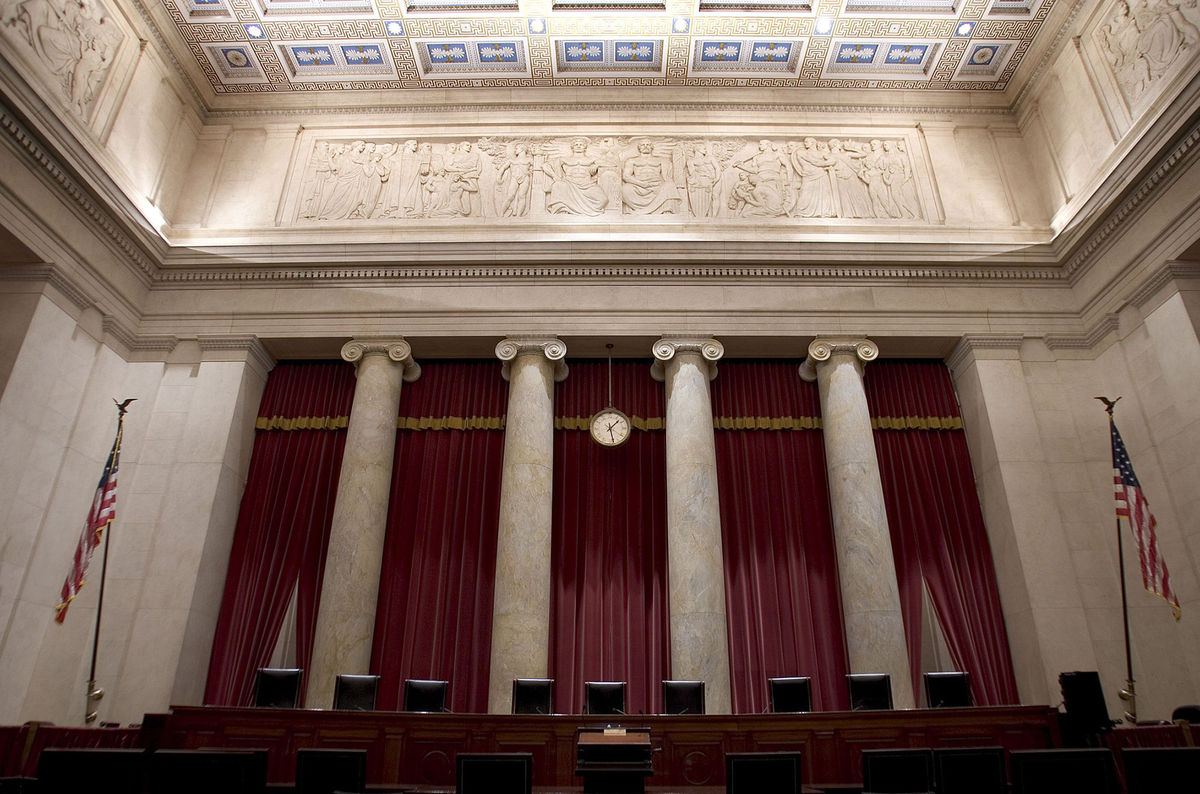On Monday, the U.S. Supreme Court heard oral arguments in Virginia House of Delegates v. Bethune-Hill (2019) to settle the long-standing legal and legislative impasse over the Commonwealth’s political district maps. The case comes less than three months before Virginia’s primary elections are set, which could be affected if the high court decides to uphold the current legislative map.
The challengers in the suit assert that the map, drawn in 2011 and upheld by a bipartisan contingent of lawmakers, including the Virginia Legislative Black Caucus, led to an unconstitutional racial gerrymander by relying too much on race, leading to the Eastern District of Virginia federal court striking down 11 House districts in the Richmond and Hampton Roads metropolitan areas. However, the defendants, led by House Speaker Kirk Cox (R-Colonial Heights), maintain that although race was one of the factors that the legislature considered when it re-drew the maps after the 2010 decennial census, it was not the only one.
SCOTUSBlog reports that after an hour of debate, “it seemed quite possible, although not certain, that the justices would reject the racial-gerrymandering challenge and uphold the map.”
Though, the justices are split over the notion of standing: the legal right to bring forth a case to the Supreme Court.
Representing the House of Delegates, attorney Paul Clement argued that the House and its “day-to-day operations” were affected by the district court’s ruling striking down the current map.
“The districts are not simply about elections,” Clement explained, adding that “legislators are also identified by where they come from.”
Justice Ruth Bader Ginsburg did not buy the assertion, stating that alterations in legislative maps occur frequently. For example, after every decennial census.
Justice Sonia Sotomayor questioned whether the House was allowed to appeal the district court’s decision in this case, which could lead to one chamber in other state legislatures being able to do the same in the future, even if a state attorney general, charged with legally representing a said state, had a different position on the matter. Moreover, Justice Sotomayor was concerned if individual members of the state legislature could also appeal themselves, calling it a “radical new step” if the Supreme Court were to move forward with the case.
Clement responded that considering the House defended the map during the case’s first trip to the Supreme Court in 2017, the House has the right to appeal the lower court’s decision, regardless of Attorney General Mark Herring‘s (D) assertion of his authority.
Justice Samuel Alito suggested to Clement that the high court should instead ask the Virginia Supreme Court to weigh in on the question of the House representing the Commonwealth itself in court proceedings, or whether that is a role reserved solely for the state’s attorney general.
Justice Elena Kagan asked Clement “whether, even if he is correct (and Kagan acknowledged that he seems to be) that Virginia’s attorney general previously was happy to have the House of Delegates ‘do the work’ and represent the state in defending the districts, that means that the attorney general has permanently delegated the authority to represent the state to the legislature.”
“Yes,” Clement responded.
Justice Sotomayor criticized Clement’s short explanation as a “pretty extreme statement,” but Clement held his ground, claiming it was a consequence of the attorney general’s choice.
Justice Stephen Breyer showed concerned that, if the House was not allowed to appeal, partisan divisions in government might lead to “inertia” in redistricting challenges. In the current case, Virginia’s GOP-controlled legislature created the now-challenged map, but Attorney General Herring, a Democrat, decided not to appeal the district court’s decision striking it down.
“If you have a Democratic legislature and a Republican governor, or vice versa,” Justice Breyer said, “nobody’s going to be able to attack it.”
“It’s the House’s plan,” he added, “and the governor won’t attack it because he likes it politically.”
“So who will?” Justice Breyer asked.
Toby Heytens, Herring’s appointed solicitor general of Virginia, began to say he did not believe that was a question the Supreme Court needs to decide.
“I’d like to decide,” Justice Breyer interjected.
On the case of racial gerrymandering, some of the conservative bloc of the nine-justice bench did weigh in.
Justice Brett Kavanaugh agreed with the House’s argument that when it drew the map in 2011, it was “caught between a rock and a hard place.” Justice Kavanaugh told Marc Elias, the attorney for the challengers, that the legislature would be “hammered” if it had aimed to have 52 percent black voting-age population (BVAP) under the Voting Rights Act of 1965, rather than 55 percent, because that number would be considered “too low.”
He asked, “How can the state comply with both the Voting Rights Act and the Constitution’s equal protection clause in this narrow band between 51 and 55 percent?”
Justice Sotomayor responded, “It’s hard to imagine that race wasn’t a primary factor driving the redistricting when one of the lines dividing two districts was drawn ‘in the middle of the street with black houses on one side and white houses on another side.'”
Chief Justice John Roberts, on the other hand, had a different view of the situation. He said the “elephant in the room” was the idea that the legal standard for determining whether race was a primary consideration in redistricting “depends heavily” on whether the trial court believes that witnesses are credible.
The chief justice noted that Delegate Chris Jones (R-Suffolk), the architect of the 2011 map, was regarded as a credible witness at the first trial, but at the second trial, which featured a new judge, he was not regarded as credible.
“If the case had come out the other way,” Chief Justice Roberts emphasized, “then the Supreme Court would have to defer to ‘questions of credibility that go the other way’ instead.”
“Our review sort of depends on whoever gets here last,” he concluded.
Clement agreed with the chief justice’s explanation, adding that when the determinations regarding the credibility of a witness are “diametrically opposed,” the district court should be required to explain the change.
“When a court ‘has gone out of its way to say that it’s particularly important to credit the good faith of the legislatures engaged in a very difficult task’ like redistricting, there should be a higher standard ‘before you dismiss their testimony across the board,'” he argued.
Seemingly unpersuaded, Justice Breyer suggested the possibility that the court could “forget about the first trial” and only view the credibility of the witnesses in the purview of the second trial.
Reportedly, Justice Neil Gorsuch asked just one question during oral arguments, while Justice Clarence Thomas remained silent.
The Richmond Times-Dispatch reports that Speaker Cox said he “felt good” about the proceedings.
“Both on the merits and the standing, I thought it went very well for us,” he said.
Herring declined to comment on the Supreme Court’s thoughts, but said Virginia should be working to fix a “race-based, unconstitutional gerrymander.”
“Nothing I heard today changed my belief that it’s time for this case to come to an end,” he added.
If the questions regarding standing are resolved and the court takes the case, a ruling may not be handed down until May or even June, which could cause major interference in the legislative primary elections set for June 12.






